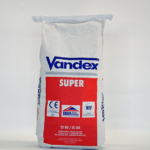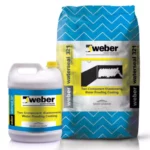Waterproofing
Waterproofing in Construction
In building construction, waterproofing is a fundamental aspect of creating a building envelope, which is a controlled environment. A building or structure is waterproofed with the use of membranes and coatings to protect contents and structural integrity. The roof covering materials, siding, foundations, and all of the various penetrations through these surfaces must be water-resistant and sometimes waterproof.

The Building Envelope
Roofing materials are generally designed to be water-resistant and shed water from a sloping roof, but in some conditions, such as ice damming and on flat roofs, the roofing must be waterproof. Many types of waterproof membrane systems are available, including felt paper or tar paper to make a built-up roof, other bituminous waterproofing, ethylene propylene diene monomer EPDM rubber, hypalon, polyvinyl chloride, liquid roofing, and more.
Walls are not subjected to standing water, and the water-resistant membranes used as housewraps are designed to be porous enough to let moisture escape. Walls also have vapor barriers or air barriers. Damp proofing is another aspect of waterproofing. Masonry walls are built with a damp-proof course to prevent rising damp, and the concrete in foundations needs to be damp-proofed or waterproofed with a liquid coating, basement waterproofing membrane (even under the concrete slab floor where polyethylene sheeting is commonly used), or an additive to the concrete.
Below-ground waterproofing is generally divided into two areas:
Tanking: This is waterproofing used where the below-ground structure will be sitting in the water table continuously or periodically. This causes hydrostatic pressure on both the membrane and structure and requires full encapsulation of the basement structure in a tanking membrane, under slab and walls.
Damp proofing: This is waterproofing used where the water table is lower than the structure and there is good free-draining fill. The membrane deals with the shedding of water and the ingress of water vapor only, with no hydrostatic pressure. Generally, this incorporates a damp proof membrane (DPM) to the walls with a polythene DPM under the slab. With higher grade DPM, some protection from short-term Hydrostatic pressure can be gained by transitioning the higher quality wall DPM to the slab polythene under the footing, rather than at the footing face.


